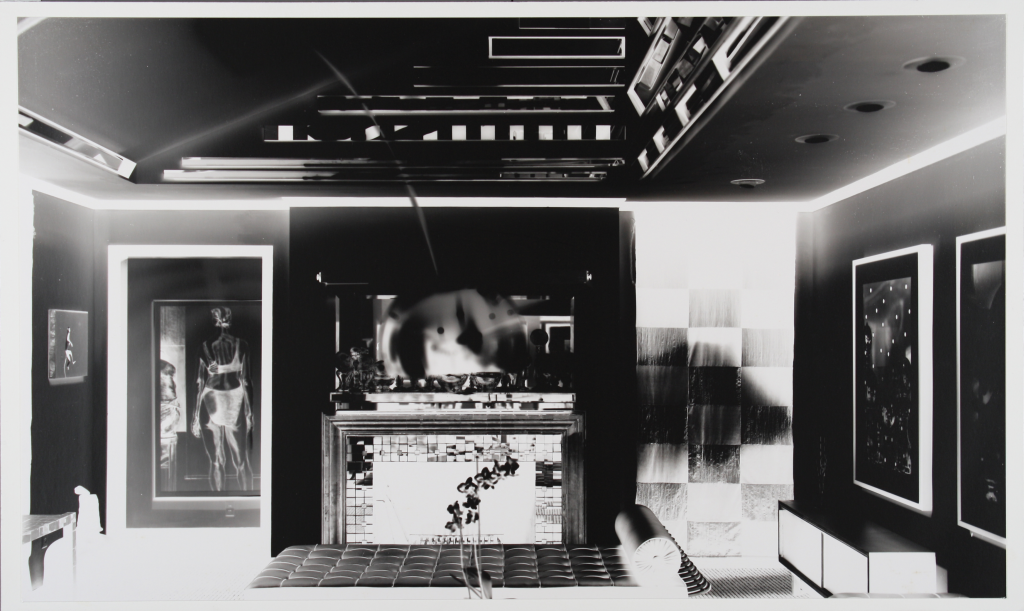Martin PrekopObfuscation as strategy

The artist states that, since 1993, he has treated his house and his property as a sculptural art project.
The Barcelona Couch by Mies van der Rohe, the Bauhaus Lamp by Wilhelm Wagenfeld and the iconic two-seater, La Chaise, by Charles and Ray Eames: design classics, such as these, have a high-recognition factor. This is true, at least, for the educated middle and upper-classes of traditional western societies. American artist Martin Prekop, who is based in Pittsburgh, Pennsylvania, makes small-scale photographs of them. In doing so, he reveals their domestic context; the other furnishings and artworks in the house inhabited by him and his family, and situated at the suburban edge of the former steel city. These photographs provide some insight into his own private environment. You can see the interiors, but also parts of the facade and views of the garden; its large overgrown shrubs and trees surrounded by a wooden fence.
But – and this distinction is crucial – in his work dating from 2000, Prekop doesn’t allow the viewer to read his images with ease creating, instead, abstractions through his chosen process. Since the invention of the photographic negative by William Henry Fox Talbot in the 1830s, it has been customary to use the negative as an intermediate step in the production of an analogue photograph.
Prekop, however, takes a different approach. Using a 16×20 large-format camera, converted by himself, he exposes the image in the camera straight onto the enlarging paper.
The unique result, which indeed looks like a negative, Prekop declares the finished product of this practice: with all its implications and contradictions. Where there was light there is now shadow. Black is white and white is black. Prekop breaks with the conventional process of analogue photography at the very threshold of its defining characteristic: its technical reproducibility which is, in theory, infinite. In 1936 Walter Benjamin described the implications of this in The Work of Art in the Age of Mechanical Reproduction.
By directly exposing onto enlarging paper, Prekop avoids the usual intermediate step of working with the negative. By doing so, the image is removed from any further processing. It is isolated and labelled as the original. Prekop calls it a Paper Negative Unique Print. In this manner, the artist emphasises its immediacy, its unique existence. In doing so, Prekop also reclaims the lost qualities of the art-object, such as authenticity and uniqueness that, according to Benjamin, photography forfeited in its ability to be endlessly duplicated. However, he presents to the viewer quite a difficult task. The viewer has to decipher the irritating and inverted tonal values in relation to their original state. Their level of abstraction is simultaneously high and subtle, leading to the result that any attempt to fully decipher the scene remains obscured by Prekop’s subtle strategy of obfuscation.
The artist states that, since 1993, he has treated his house and his property as a sculptural art project. He deliberately limits his radius of action. Declaring his family home the object of his artistic work, he produces a high congruency between the private and the professional. This affects his aesthetic preferences, which are characterised by clarity and timelessness, as well as his distinguished lifestyle and his conceptually-sophisticated artistic practice. In so doing, it raises questions: What is pose? What is irony? The homely environment is turned into the place where magically-charged, artistic images are created.
Prior to working on his Paper Negatives Unique Prints, Prekop made use of conventional silver gelatin prints. A good example: Construction: Mirror Fence Tree from 1997. This is an arrangement comprising dozens of small rectangular mirrors on wooden planks and branches that distract the viewer’s gaze along countless directions. Since 2000, Prekop has also been working on a series examining commercially-available, simple measuring tools, for example, folding rulers, measuring tapes and spirit levels. He is interested in their aesthetic and metaphoric value. Referring to Modernist conventions and simultaneously questioning them, he sets them up in organic-figurative or strict constructivist arrangements.
To summarise, one might say that Martin Prekop, who continues to teach at Carnegie Mellon University, Pittsburgh, examines closed aesthetic systems of modernity and late modernity, focussing on their self-referentiality and their present significance. In doing so, and in an ironical manner, he also makes his personal involvement as an artist and as a consumer the subject of discussion.
